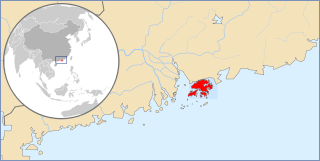A telephone numbering plan is a type of numbering scheme used in telecommunication to assign telephone numbers to subscriber telephones or other telephony endpoints. Telephone numbers are the addresses of participants in a telephone network, reachable by a system of destination code routing. Telephone numbering plans are defined in each of administrative regions of the public switched telephone network (PSTN) and they are also present in private telephone networks. For public number systems, geographic location plays a role in the sequence of numbers assigned to each telephone subscriber.

Telephone numbers in the United Kingdom are administered by the UK government's Office of Communications (Ofcom). For this purpose Ofcom established a telephone numbering plan, known as the National Telephone Numbering Plan, which is the system for assigning telephone numbers to subscriber stations.

The Australian telephone numbering plan describes the allocation of phone numbers in Australia. It has changed many times, the most recent major reorganisation by the Australian Communications and Media Authority taking place between 1994 and 1998.

Telephone numbers in China are organized according to the Chinese Telephone Code Plan. The numerical formats of landlines and mobile phones are different: landlines have area-codes, whereas mobile phones do not. In major cities, landline-numbers consist of a two-digit area code followed by an eight-digit inner-number. In other places, landline-numbers consist of a three-digit area code followed by a seven- or eight-digit inner-number. The numbers of mobile phones consist of eleven digits.
Telephone numbers in Japan consist of an area code, an exchange number, and a subscriber number.

Telephone numbers in Hong Kong are mostly eight-digit. Fixed land line numbers start with 2 or 3, mobile (cellular) phone numbers with 5, 6, 7 or 9, pager numbers with 7 and forwarding service with 8. Since the end of 1989, there have been no area codes within Hong Kong.
The Big Number Change addressed various issues with the telephone dialing plan in the United Kingdom, during the late-1990s and early-2000s.

Numbers on the Irish Telephone Numbering Plan are regulated and assigned to operators by ComReg.

Telephone numbers in Singapore, also known as the National Numbering Plan, are regulated by the Info-communications Media Development Authority (IMDA). Due to the small geographical size of Singapore, there are no area or trunk codes; all numbers belong to one numbering area, and thus come in the same 8-digit format. Numbers are categorised based on the first digit, thus providing ten possible categories, of which six are currently in use and the remaining four reserved for future usage.

The format of telephone numbers in Australia has changed over time to allow for the expansion of the subscriber base as technology has improved.

PhONEday was a change to the telephone dialing plan in the United Kingdom on 16 April 1995. It changed geographic area codes and some telephone numbers. In most areas a "1" was added to the dialling code. In Bristol, Leeds, Leicester, Nottingham and Sheffield the area codes were replaced with new codes and the subscriber numbers gained an extra digit. The PhONEday changes also made provision for new ranges of subscriber numbers in those five cities. A £16m advertising campaign, and an eight-month period of parallel running during which old and new codes were active, preceded the change. PhONEday followed a change made in May 1990 when the old London area code 01 had been released from use, permitting all United Kingdom geographic numbers to begin with this prefix. Originally planned in 1991 to take place in 1994, in 1992 the change was postponed until 1995.

Until September 1999, East Timor formed part of the Indonesian numbering plan, using the country code +62, followed by area codes for the two largest cities, Dili (390) and Baucau (399). Following the violence in the wake of Indonesia's departure from the territory, most of the telecommunications infrastructure was destroyed, and Telkom Indonesia withdrew its services from East Timor.

The regulation of telephone numbers in Germany is the responsibility of the Federal Network Agency of the German government. The agency has a mandate to telecommunications in Germany and other infrastructure systems.
Fixed line numbers are seven digits long in a closed telephone numbering plan, with the geographical area being indicated by the first two or three digits. There are no area codes in Botswana.
The national conventions for writing telephone numbers vary by country. While international standards exist in the form of the International Telecommunication Union sector ITU-T issued recommendation E.123, national telephone numbering plans define the format and length of telephone numbers assigned to telephones.
Namibia's telephone numbering plan was originally devised when the country, then known as South West Africa, was under South African administration, and integrated into the South African telephone numbering plan.
Country Code: +266
International Call Prefix: 00
Trunk Prefix:












